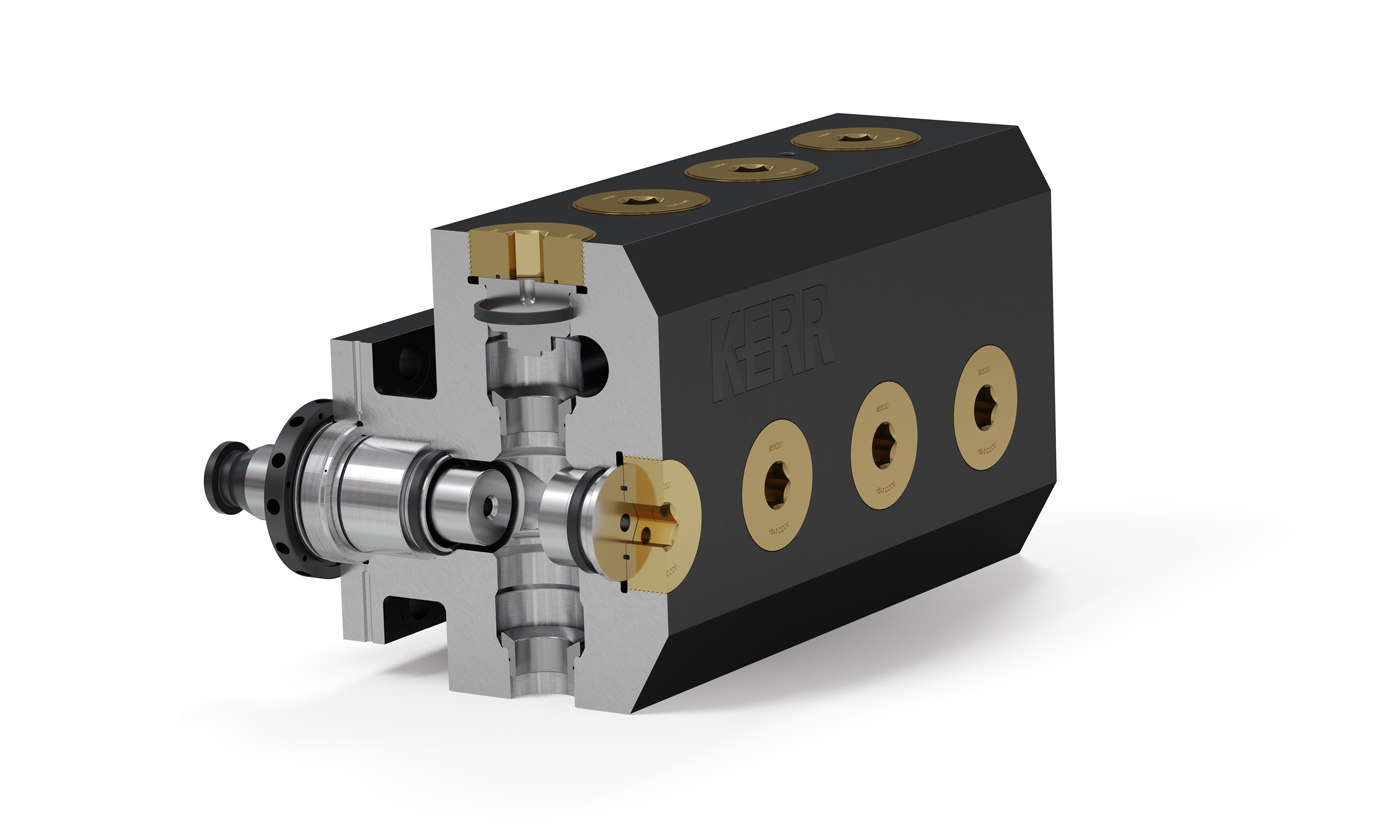01. Fatigue Cracking
The biggest failure of fluid ends is fatigue cracking. Most fluid ends are made of high-strength carbon steel that can corrode very quickly. Corrosion on the surface of the material decreases the endurance limit by about 50 percent, which is why traditional fluid ends crack so easily. The good news is that fluid end fatigue cracking can be significantly reduced - and often eliminated - by constructing them from top-quality, high-strength stainless steel exclusively available from Kerr Pumps. Our fluid ends are made of SUPER STAINLESS™, which is 10x tougher and stronger than the industry standard. SUPER STAINLESS™ is a combination of the most homogenous and pure stainless steel ever used in the pressure pumping industry. In addition to fatigue cracking, the intersecting bore experiences an extreme amount of stress. Our patent-pending optimized geometry design in the intersecting bore helps reduce stress on the fluid end helping to keep it from cracking. Traditional fluid ends last only 100 to 500 actual pumping hours. Our field research has shown that actual pumping hours are closer to 20% of the engine hours vs. the 80% that most customers thought they were achieving. Kerr Pumps’ SUPER STAINLESS™ fluid ends with optimized geometry can last nearly 10 times longer when properly maintained. Our customers are experiencing 1,000 to 5,000 actual pumping hours, which is quite a return on investment.02. Packing Bore Washouts
When the packing wears into the packing bore, it creates waves called washboarding. Eventually, the packing bore is so severely washboarded, that the packing will not seal. Washouts and washboarding can be weld repaired, but that drastically reduces the strength of the fluid end.
Our patent-pending design solves the sealing problem by using seals that are engineered to fit precisely into a groove machined into the fluid end. Now the stuffing box sleeve is a sacrificial piece in two places on the inside diameter where the packing seals and the outside diameter are against the fluid end.
03. Suction Seal Bore
As the pump vibrates and pulsates at high pressure, sand gets trapped in the sealing area, and the seals move against the fluid end. Eventually, the seal wears so deeply around the seal bore of the fluid end that it can no longer seal properly. This wear can also be a form of fretting fatigue that can initiate cracking. Typically, weld repairs are made to fix the fluid end sealing problems, but that weakens the fluid end and decreases fatigue life because everything happens at the surface.
Our patent-pending design adds a groove that houses the seal bore seal. Because more than 90 percent of fluid end washouts occur in the packing and suction seal bores, sacrificing the replaceable parts is a much less expensive alternative to replacing the fluid end.
04. Valve Seat Washouts
Valve seats can get changed as often as every 40 hours up to 100 hours. It takes many valuable hours to change out valve seats, and the fluid end taper can be damaged by the tools required to change them out. Valve seats made of Tungsten carbide can last five to 10 times longer than traditional seats. This means five to 10 times fewer hours spent changing out seats and lowering the risk of damaging the fluid end taper seat area.
05. Discharge Seal Bore
The discharge seal bore wears as it rubs against the seal on the discharge plug. When valve seats get pulled to change out parts, the tools used can damage the seal bore areas. Our patent-pending design creates a groove that houses the seal for the discharge bore. This placement causes the seal to rub against the discharge plug instead of the fluid end and keeps the discharge bore protected from tools that could scar its sealing surface during maintenance.
